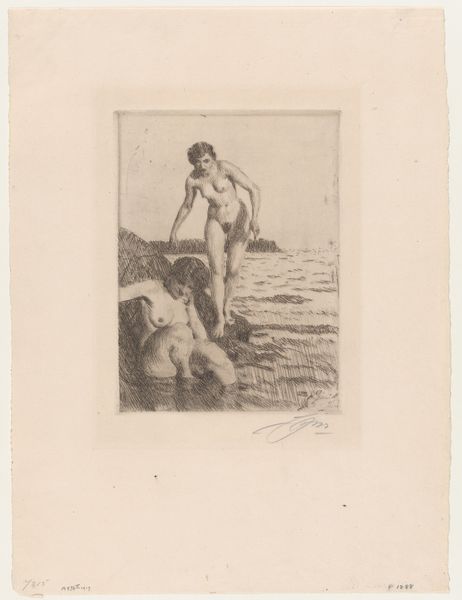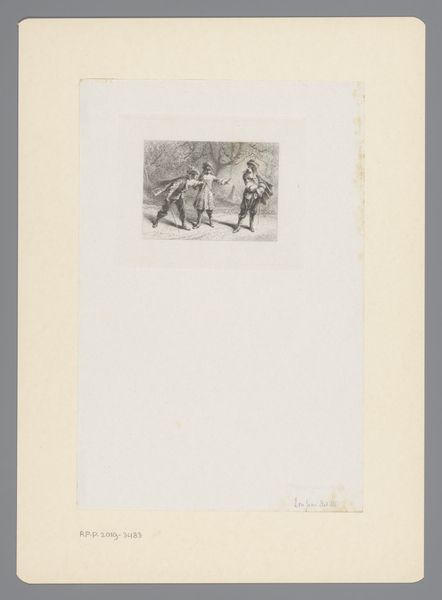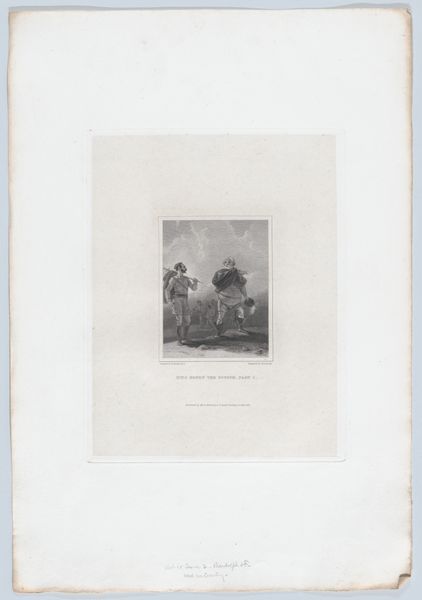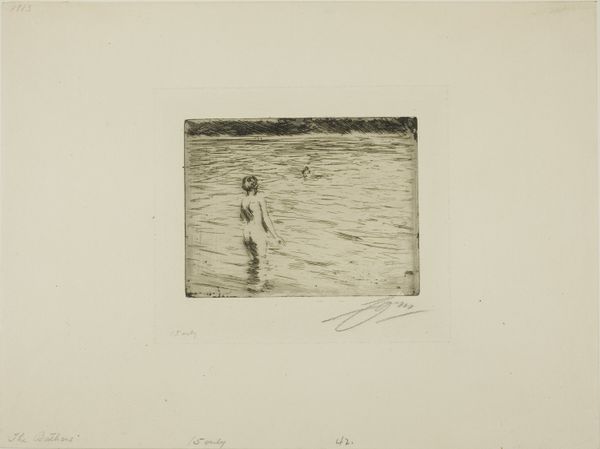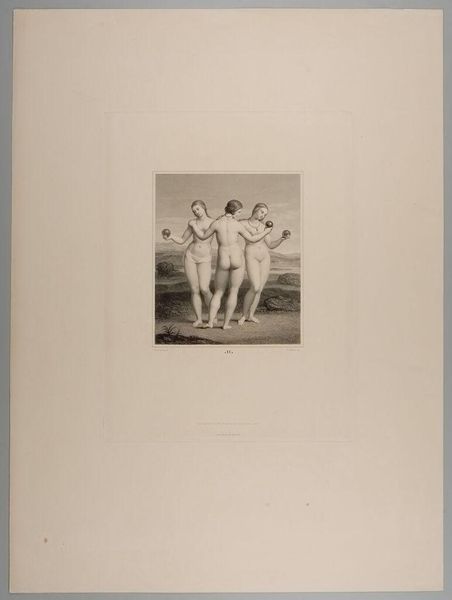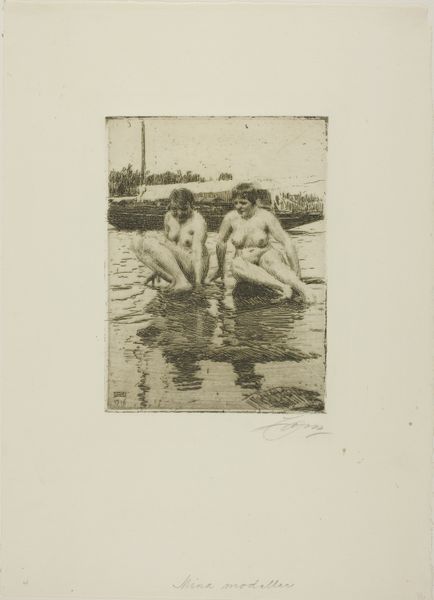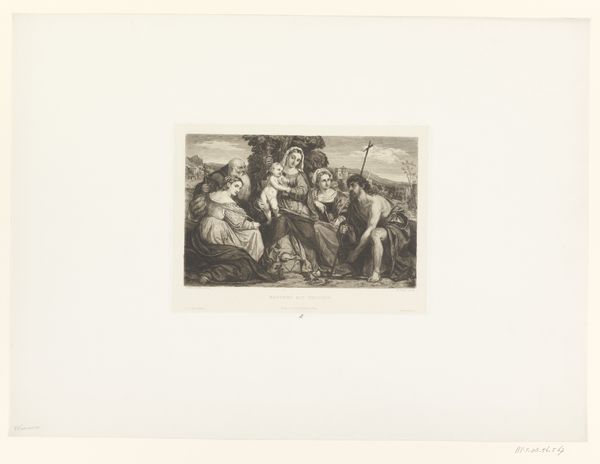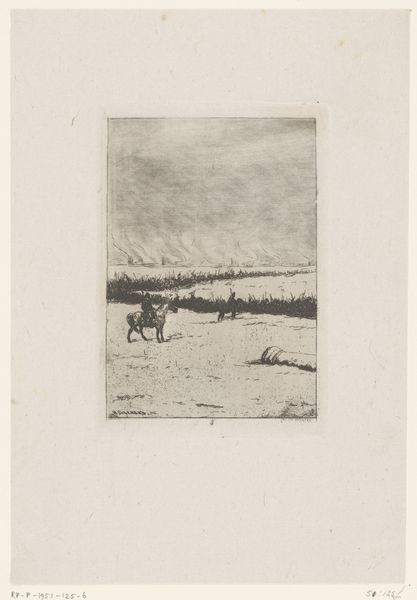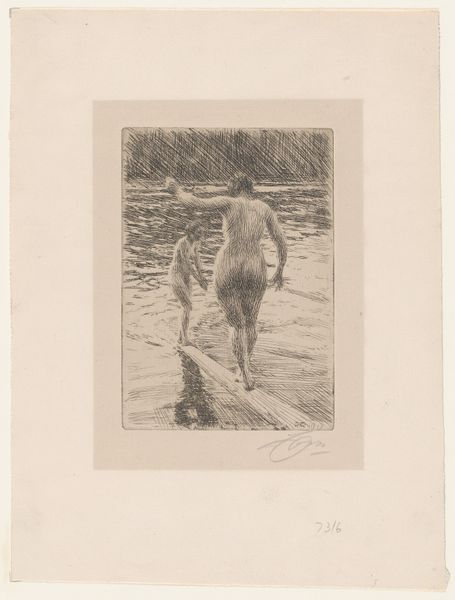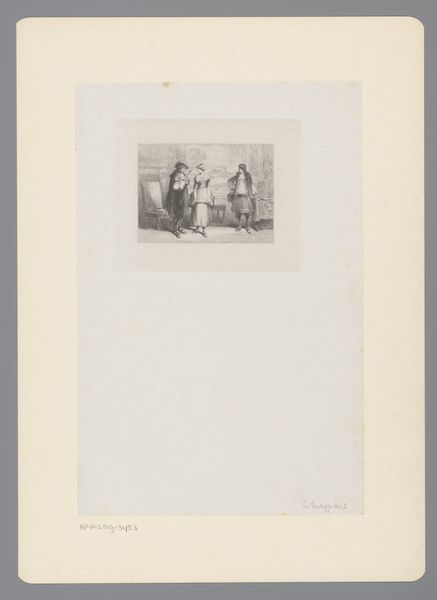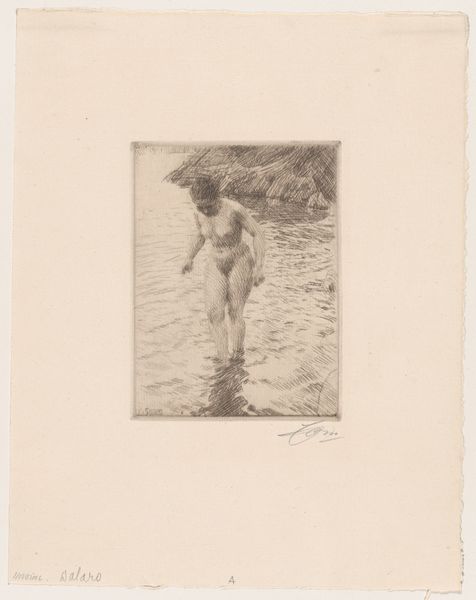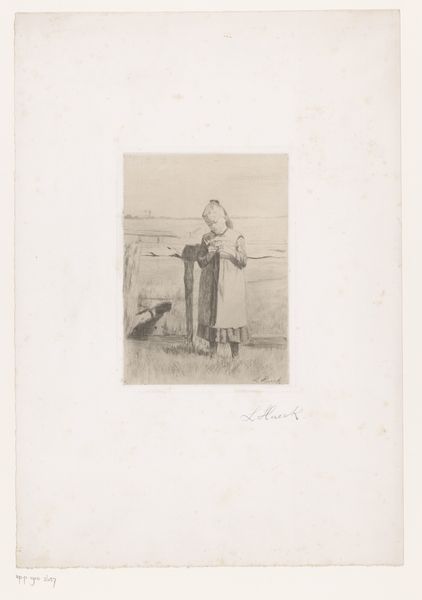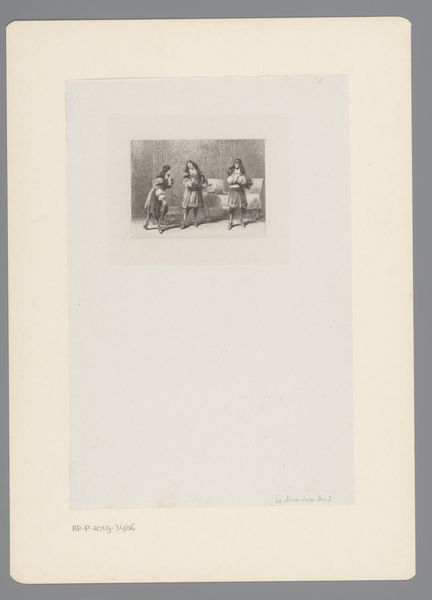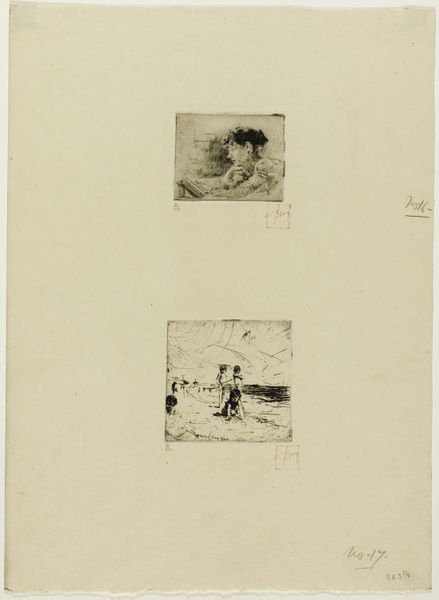
Dimensions: Plate: 6 5/16 × 4 3/4 in. (16 × 12 cm) Sheet: 13 in. × 10 1/8 in. (33 × 25.7 cm)
Copyright: Public Domain
Editor: Here we have Anders Zorn’s "The Three Graces," created in 1910, currently residing at the Metropolitan Museum of Art. It’s an etching, a print on paper, rendered in a style evocative of Impressionism and Romanticism. The composition strikes me as surprisingly simple, almost elemental in its focus on form. What catches your eye in this print? Curator: Immediately, the tonal range, achieved through the density and variation of the etched lines, dictates my reading. Note how Zorn uses hatching and cross-hatching to define the figures, create a sense of volume, and simultaneously suggest the play of light on water. The way he articulates the water surface, a dynamic interplay of reflections and distortions, seems paramount to the work’s success. Do you see how the reflections fragment the figures? Editor: Yes, the reflections almost dissolve their lower halves. So, you are seeing the artistic intent primarily through the manipulation of light and shadow via the etching technique? Curator: Precisely. The subject, the three nudes, could easily become overly sentimental. However, Zorn avoids that through his masterful control of the medium. The line is not merely descriptive; it is expressive, lending a certain weight to what might otherwise be a decorative motif. Consider how different the experience of this image is without those fractured reflections. Editor: That's a strong point, the surface manipulation does indeed create significant expressive power. Thanks for guiding me through it, I’m walking away with a deeper understanding of what details can convey in an etching. Curator: A careful viewing of Zorn's print clarifies that the formal properties, the manipulation of line, shadow and their contribution to a sense of texture and motion, constitutes the subject as much as the represented figures do.
Comments
No comments
Be the first to comment and join the conversation on the ultimate creative platform.
